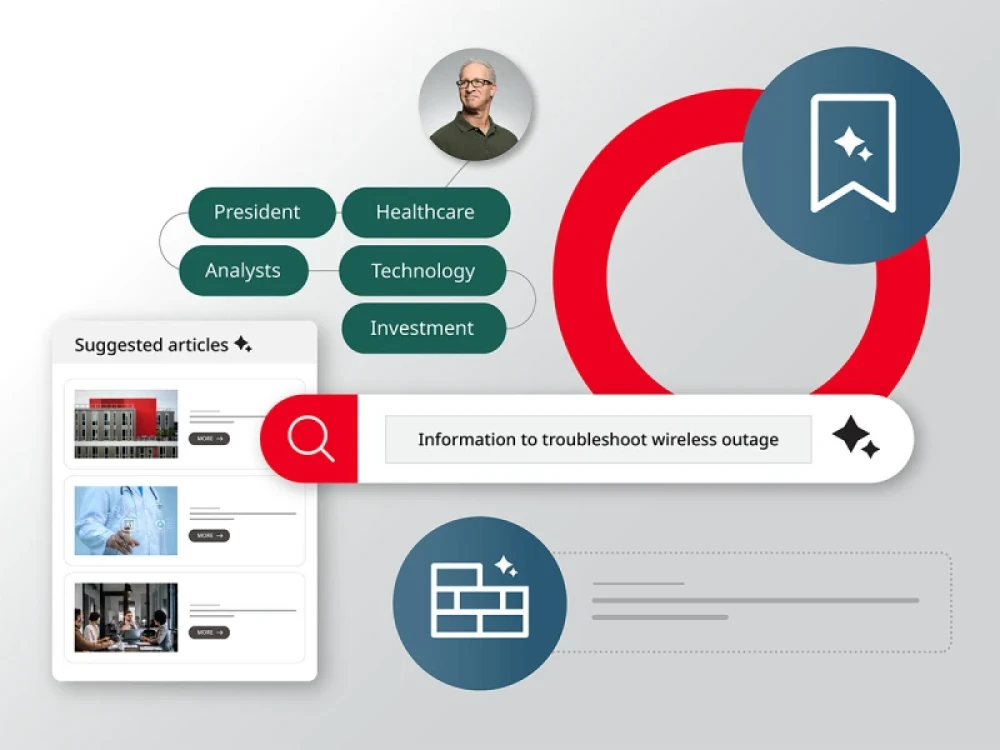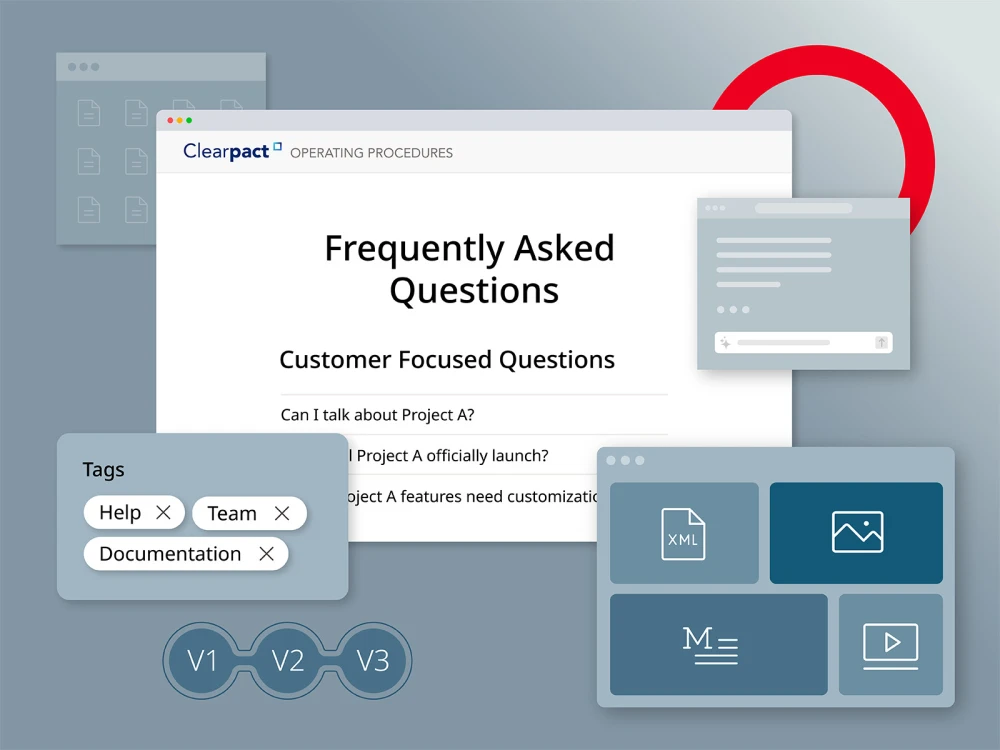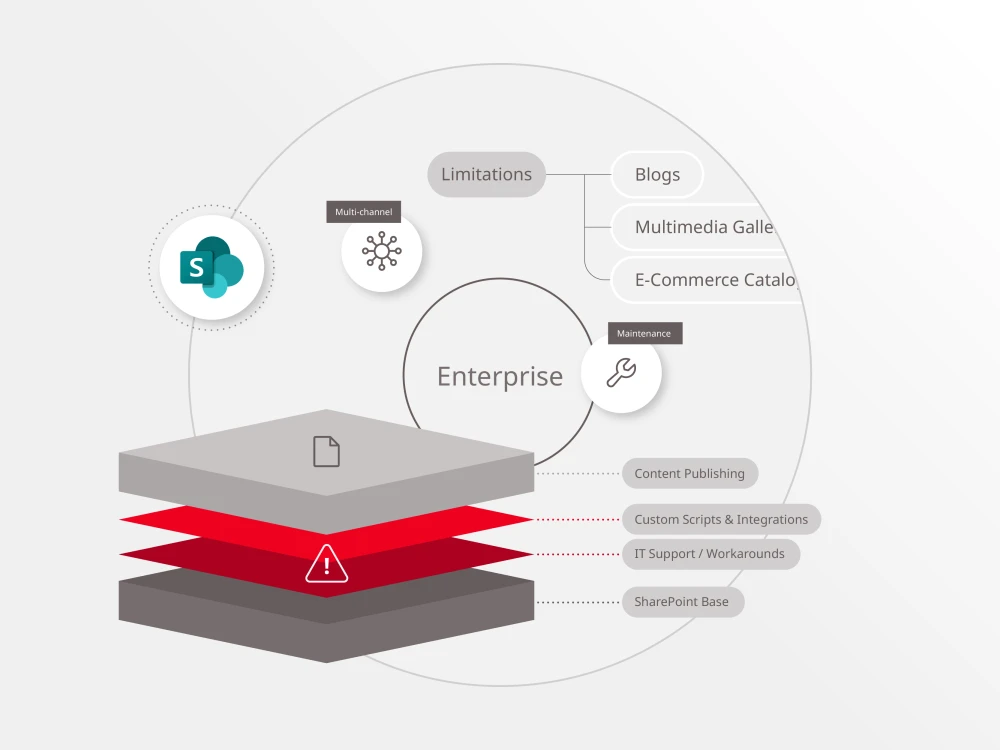In today’s ever-evolving field of modern engineering, few topics are as essential yet often overlooked as knowledge management. As organizations evolve, adopting cutting-edge technologies like cloud infrastructure and microservices, they also face new challenges: remote workforces, complex distributed systems and constant innovation. At the intersection of all these changes lies a critical component that can make or break success — knowledge management.
Chris Westerhold, Sr. Director of Developer Experience and Platforms at HTEC Group, has spent years helping companies navigate this complex issue. In his view, knowledge management isn’t just about documenting code or storing process information — it’s about creating a resilient system that empowers teams to work efficiently and collaborate seamlessly. Westerhold takes an unconventional approach by linking knowledge management with broader concepts of engineering effectiveness, where “cost, quality, and speed must be balanced to maximize return on investment.”
“Knowledge management has always been important, but it’s now more essential than ever because of how fast the landscape is evolving,” Westerhold explains. “With the rise of cloud, distributed architectures and remote teams, if you’re not intentionally managing knowledge, you’re setting yourself up for friction that slows down your entire organization.”
Ineffective knowledge management has real financial impact. But beyond the numbers, it also affects morale. When people feel like they’re constantly running into dead ends trying to find basic information, it wears them down.
The high stakes of poor knowledge management
It’s a scenario that many engineering leaders know all too well: a key team member — someone who has been integral in building and maintaining critical systems — decides to leave the company. The departure creates a gap not only in terms of workload but also in institutional knowledge, leading to frantic efforts to capture what that employee knows before they walk out the door. In some cases, it’s already too late.
HTEC’s Westerhold points out that this is where many organizations falter, operating reactively rather than proactively. “When a key developer leaves, all their institutional knowledge can walk out the door with them,” he says. “And that’s just one of many scenarios where poor knowledge management hurts a company. You also lose time when new hires struggle to get up to speed because documentation is outdated or scattered across different tools.”
In Westerhold’s experience, companies often rely on tools like Confluence, SharePoint or readme files, but these are just static documentation tools, not true knowledge management systems. The result? Teams spend more time searching for information than they do building products. “It’s a paradox,” Westerhold says. “You can have an overwhelming amount of information but still not have access to the right knowledge when you need it.”
An LLM is great for sifting through vast amounts of data, but if you’re asking it to search a pile of garbage, you’re going to get garbage results. To really benefit from AI, you need a solid underlying structure, with clear associations and tagging
Moving beyond documentation
The distinction between documentation and knowledge management is crucial. According to Westerhold, documentation is only one part of a larger system. “Documentation is something you do, whereas knowledge management is a framework in which you operate,” he explains. In other words, documentation alone is not enough to keep an organization running smoothly. What’s needed is a dynamic, integrated knowledge management system that facilitates continuous sharing and updating of critical information.
“Modern engineering demands more than just static documentation,” Westerhold says. “True knowledge management creates a living, breathing ecosystem where information flows freely, enhancing every aspect of the software delivery lifecycle. It’s about embedding knowledge sharing into your daily workflow so that it becomes second nature, rather than an afterthought.”
HTEC’s Westerhold emphasizes the need for a shift in mindset. He characterizes the impact of engineering effectiveness through the concept of a “developer triangle.” This model, akin to the project management triangle, requires balancing cost, speed and quality in any engineering project. He explains: “When I think of excellence, it’s in terms of effectiveness. If you want everything to be excellent, it’s going to cost you a lot of money. Instead, aim to be effective at what’s essential for the business, using the triangle as a guide. If you want it fast and cheap, quality will be lower — it’s inevitable unless you’re willing to expand that triangle.”
The same holds for knowledge management, Westerhold notes, where “knowledge management is about figuring out how to do things well enough to get the job done, but with built-in structures to improve over time. It’s not about perfection on day one, but rather setting up a sustainable system that can grow with your needs.” In this sense, knowledge management is a core part of engineering effectiveness, providing the foundation for efficiency and continuous improvement.
Engineering knowledge management as a product
One of Westerhold’s strongest recommendations is to treat knowledge management with the same care and attention as any other product within an organization. He argues that this product mindset is necessary to avoid the common pitfall of fragmented, incomplete documentation.
“Documentation by itself is limited,” he says. “It’s static, and if you don’t apply a knowledge management framework to support it, it quickly becomes outdated or irrelevant. Knowledge management, on the other hand, is a living system — a product in its own right — that needs a clear set of features, standards and roadmaps. That way, you’re not just cataloging information but creating a dynamic system that improves over time.”
HTEC’s Westerhold explains that there are three major knowledge management needs that support the software development lifecycle: documentation of business processes, technical documentation of code and services, and question-and-answer resources to resolve gaps in real-time. “You need to be intentional about each of these areas,” he advises, “and accept that no single system can solve all of them.”
HTEC has experimented with pairing tools like Brightspot and Backstage to address these distinct needs. “When integrated, Backstage can handle technical taxonomy, while Brightspot manages broader business documentation,” he says. “Together, they create a unified knowledge management ecosystem, making it easier for people to find the information they need without dealing with bad choices and redundant content.”
The real-world costs and the ROI of good knowledge management
The absence of an intentional knowledge management framework can have ripple effects throughout an organization, from lost productivity to a lack of innovation. Westerhold warns of the hidden costs companies face when they don’t invest in proper systems. He cites an analysis he conducted on a development team struggling with documentation: “They had over 100,000 pages in Confluence, but nobody trusted it because it was either outdated or incomplete. Instead of finding the answers they needed, developers would end up pinging subject matter experts for help. It was a complete breakdown of the system.”
In another example, Westerhold points to recent analysis HTEC conducted on the impact of poor documentation for a large client. This found it was costing them millions in lost productivity each year. “They’re losing about $40 million annually because of ineffective documentation,” he reveals. “If you tell a CTO that setting up a proper knowledge management system could save that kind of money, it’s a compelling case. You might invest $5 million upfront, but the savings are huge in the long run.”
Westerhold emphasizes that the most expensive part of an engineering organization is its people, and inefficiencies in knowledge management lead to considerable waste. “If developers are spending 60% of their time searching for answers instead of building, that’s a huge loss. So the key is enabling them with good knowledge management. Make it easy for people to access and contribute to a well-organized, up-to-date knowledge base, and you’ll start seeing the cost come down as productivity and satisfaction increase.”
Leveraging AI — but don’t rely on it alone
As AI continues to advance, it’s tempting to see it as the solution to all knowledge management problems. While AI certainly has a role to play, Westerhold cautions that it’s not a magic bullet. “AI can help with things like searching large knowledge bases and providing answers, but the underlying data still needs to be well-organized and reliable,” he says.
Governance is essential to keeping a knowledge management system reliable, he continues. “Think of it like the quality checks in software delivery — security scans, linters, pipeline validations. You need similar checks for your documentation,” he notes. With systems like Brightspot, he adds, it’s even possible to track content that hasn’t been updated in months and alert owners to review it. “Automating these maintenance checks is essential because, without them, documentation becomes a swamp. Every day inside major organizations, documentation gets worse and worse unless there’s a system in place to manage it.”
Westerhold also sees a potential role for AI in enhancing knowledge management but warns it’s not a standalone solution. “An LLM is great for sifting through vast amounts of data, but if you’re asking it to search a pile of garbage, you’re going to get garbage results,” he cautions. “To really benefit from AI, you need a solid underlying structure, with clear associations and tagging. AI works best as a layer on top of a well-managed knowledge system, helping you access what’s there in a way that’s relevant and accurate.”
Engineer effectiveness and knowledge management: A pragmatic approach to long-term success
Transforming knowledge management into a system that grows in value over time requires both commitment and a structured approach. “This isn’t an easy fix, but it’s worth the investment,” Westerhold says. “Every day that your knowledge management system is improving rather than deteriorating is a step toward a more productive, happier engineering team.”
For HTEC’s Westerhold, the benefits of effective knowledge management go beyond simple documentation. “If you treat knowledge as a core asset, just like your codebase or infrastructure, you’ll build a system that supports your organization for the long term. And the return on that investment — better productivity, reduced costs, happier teams — makes it all worthwhile.”













